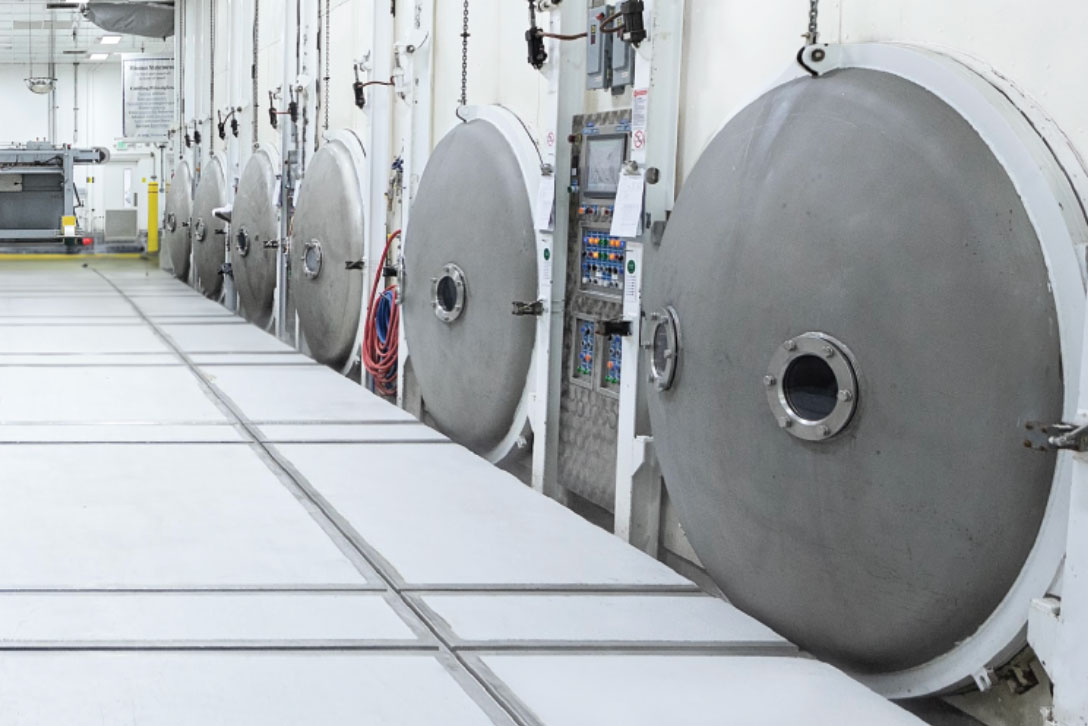Behind many stable, shelf-ready therapeutics is a process that quietly protects fragile molecules and may minimize or eliminate the need for cold storage. That process is lyophilization, also referred to as freeze-drying or sublimation, and it lies at the center of the lyophilization chamber.
These chambers are designed to remove moisture without damaging the product’s structure, potency, or performance. While the basic principles are well understood, how the process is executed can vary widely, and that can make all the difference. At OFD Life Sciences, we design, build, commission, and validate our own lyophilization chambers, giving us the freedom to rethink how each component works and constantly innovate for Biopharma, Medtech, and Consumer health applications.
The Chamber as a System
At its core, lyophilization is a moisture-removal process, but it’s also about protecting sensitive materials and preserving what makes them effective.
Each chamber supports a three-phase process:
The Heart of the Chamber – Shelving
Inside the chamber, shelves are responsible for delivering controlled and uniform thermal energy to the product throughout the process. That control ensures that all lyophilized products (bulk cake, ODT’s, strips, wound scaffolds, dual-chamber cartridges, and OFD”s Lyopastille®) maintain their structure and potency. The ability to precisely control shelf temperature is especially important during the freezing and primary drying stages. A fluctuation of just a few degrees can affect product quality, yield, and reconstitution time.
At OFD Life Sciences, we can customize optimized shelving layouts and control systems to match the specific heat transfer and mass transfer needs of each material. Whether the product is sensitive to temperature change or requires special loading formats, our shelves are built to support consistent, scalable solutions.
Vacuum and Pressure Control
To make sublimation possible, the lyophilization chamber needs a carefully controlled vacuum. By reducing the pressure inside the chamber, we allow frozen water to bypass the liquid phase and transition directly into vapor. This step is critical for preserving the structure and bioactivity of sensitive products.
Managing pressure during lyophilization requires constant adjustments based on temperature, moisture levels, product surface area, and heat flux, impacting the moisture removal rate. Too much pressure can cause collapse, while too little can slow the process.
Not all lyophilization chambers are created equal. OFD uses LyOptimization during development and scale-up, selecting from multiple algorithms to control moisture removal rates. This enables efficient drying while preserving critical material attributes and meeting end-use specifications.
The Cold Trap (aka Condenser)
As moisture leaves the product in vapor form, it needs somewhere to go. That’s where the condenser, often called the cold trap, comes in. Its job is to capture water vapor by freezing it out of the air, keeping it from reentering the vacuum pumping system and interfering with the process.
In standard systems, the condenser sits outside the main chamber, pulling vapor through vents or valves. It works, but it can be less efficient, especially when drying sensitive materials that demand tighter control.
Our proprietary design rethinks where and how moisture is captured, improving efficiency and drying performance and helping maintain product structure and stability throughout the cycle. The ratio of ice condenser surface area to product vapor surface area is greater to achieve tighter levels of vacuum control to optimize efficiency while mitigating changes to very low glass transition material formulations often needed in stabilizing biologicals.
Form Meets Function, Innovation Drives Results
All components of a lyophilization chamber play a critical role in preserving the integrity of sensitive materials. Every product is different, and so is every project. That is why OFD Life Sciences believes in adapting chamber size, layout, and features to match the exact demands of your product and process. Our unique history of innovation across stabilization and application challenges has shaped how we engineer lyophilization chambers, creating seamless, scalable solutions that evolve with your needs. Whether you are developing a novel biologic or optimizing a high-volume consumer health product, we ensure that the chamber delivers optimized performance and reliability at every stage.


